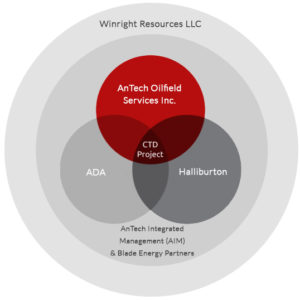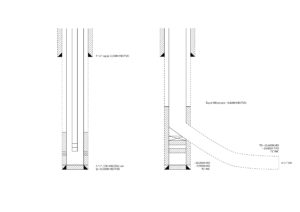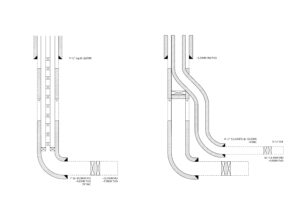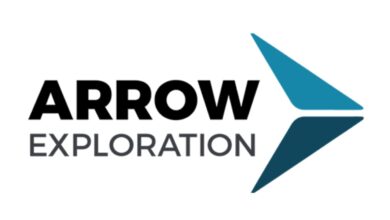Data-driven underbalanced CTD improves real-time decision making in Texas Panhandle re-entry wells
Early collaboration maximizes value of digital technologies, allows wells to be drilled without any formation damage
By Adam Miszewski, AnTech
Underbalanced coiled-tubing drilling (UBCTD) offers operators a way to capture significant extra value out of known reserves and makes maximizing returns from declining fields a viable proposition. When applied correctly, such technologies have been shown to deliver increased production rates at reduced cost compared with traditional methods.
The technology is relatively new, and developments have continued at a rapid pace. By combining the capabilities of UBCTD and the capabilities of digital technologies, another level of productivity, operational and cost effectiveness is being be achieved.

The capabilities of UBCTD can be seen in a recent project led by AnTech in the Texas Panhandle. Specialist contractors were utilized for each major component of the project and tightly integrated using project management best practices and digital technologies. As such, it can be said to represent the state-of-the-art not only in the region but across the industry.
Project overview
The project was a two-well re-entry campaign in the Texas Panhandle and was part of a wider campaign to revitalize a field that had been producing for many years. The overarching aim of the campaign was to intercept fractures and access untapped reserves to boost production.
Underbalanced drilling was seen as the best way to increase production from the field because it is known that preventing a formation from becoming overbalanced at any time can have a significant impact on subsequent production. Secondary reasons to drill the wells using UBCTD were stable underbalanced conditions, which is especially important when working with two-phase flow, and reservoir characterization while drilling to allow accurate water shut-off.
In this project, the two wells were primarily gas producers, with condensate and water also being produced. UBCTD was seen as the best way to drill the reservoir underbalanced because it provided continuous stable underbalanced bottomhole pressure, as well as fast, safe and effective operations in two phase flow.
Aggregating digital data was critical for project success
To maximize the success of the first drilling campaign on the two wells, significant time and effort were given to planning the operation.
In the early stages of the project, it was decided to take advantage of digital technologies in the form of wellsite data acquisition, offsite support for data analysis and downhole sensors by aggregating the data from all parties involved. By doing this, all parties would be able to have a complete picture of what was happening on the well site, and the speed of decision making could be improved.

Another reason for aggregating the data in real time was because RockSense, AnTech’s proprietary synthetic porosity algorithm, was to be used on the project. This required a complete real-time data picture. RockSense can distinguish between different formations by combining downhole and surface data in real time to give an at-bit measurement of porosity.
It offers two advantages over traditional geosteering techniques. First, because wired telemetry has a high data rate, multiple measurements can be made for every foot drilled and operators can gain inch-level resolution. Second, because the data delivered are representative of conditions at the bit – not 20-25 ft behind it – the driller can deliver an optimally placed wellbore, with more feet drilled in the target zone.
However, for data aggregation to be achieved in real time, a much more collaborative approach from the very earliest stages of the project was needed.
There are typically four principal parties in a UBCTD campaign: the directional downhole tools provider, the coiled-tubing service company, the underbalanced drilling fluids package and the operator. Each service company uses its own data acquisition system (DAS). This means that each party only had access to an incomplete picture at any given time, and there are delays in decision making while data from other parties are requested, collated and analyzed.

The role of data aggregation was taken on by AnTech, the directional service provider, which also provided pre-job engineering, pre-job project management, downhole equipment and data aggregation. Halliburton provided the CT unit and pumps, ADA provided the fluids separation package, and Blade Energy Partners provided pre-job engineering, wellsite supervision/ project management (Figure 2).
To enable the CT unit to run e-coil, AnTech provided the conversion kit to convert the rig to e-line (slip ring collector, collector bulkhead). This work was done well in advance of arriving at the wellsite.
The main challenge that needed to be addressed early on in the project related to cost. The critical requirement was to stay in AFE, with a related aim of showing that UBCTD could be carried out cost effectively in the US and generate a significant ROI.

Two areas of particular concern related to wellbore stability in the build section, and water. The large amount of time and effort put into planning was key to ensuring that there would be no surprises and challenges could be mitigated.
In terms of wellbore stability in the build section, the candidate wells needed to be evaluated for stability in the overburden immediately above the pay zone.
There was also risk of hitting water, as wells in the area had a history of watering out. This meant that an assessment was needed in order to avoid having negative impacts to the ROI from water.
The planning showed that only one candidate well was able to be drilled underbalanced with an acceptable level of risk. All other wells had substantial amounts of shale interbedded with the limestone in the build section and, therefore, there was a high risk of shale instability. It was for this reason that the second well had an intermediate section drilled and cased by a conventional drilling rig.
The outcome from the planning was a detailed set of written procedures outlining exactly how the project was to be carried out.
It also enabled contingency planning to deal with wellbore stability in the build section and water in the horizontal to be carried out. Such contingencies included an expandable liner being kept on standby and inflatable plugs being available in case of hitting water.
It is evident that an unusual level of collaboration and cooperation was required very early on in the project timeline. This came about because of the operator’s deep understanding of the requirements of UBCTD, based on successful projects in the past and the need to bring together an experienced team. The integration of teams was crucial to the eventual success of this project.
Well Design Overview
Well 1
Well 1 (Figure 3) was a vertical well that had been producing gas, but production had dropped off to uneconomical levels. The plan was to pull tubing from the well, insert a whipstock and mill a window using a workover unit, the most time- and cost-effective way to do this part of the operation. The UBCTD package would then be mobilized, and a horizontal wellbore would be drilled.
Well 2
Well 2 was a horizontal well (Figure 4). Starting in the vertical section would have involved drilling through a shale section that would be unstable when the well was put underbalanced. A drilling rig was, therefore, specified to drill an intermediate section to the top of the reservoir, which would then be cased and cemented. The casing shoe was at over 10,000 ft and 74° inclination. The rig would then be demobilized and the UBCTD package mobilized and rigged up. The UBCTD package would then drill out the casing shoe, land the well horizontally and drill a horizontal section.
With regard to staying in the payzone/target formation, as the reservoir was very thick, control of vertical depth was not critical. There was a gamma marker above the reservoir, which could be picked using the gamma sensor on the drilling BHA. RockSense would be used to identify when fractures and faults were drilled through.
AnTech’s COLT BHA was specified for use on this element of the project, and its short length proved valuable. It allowed for a standard setup, with the injector and lubricator suspended from a crane.
To ensure operational efficiency and safety during deployment and undeployment of the BHAs, two mouseholes would be drilled; a backup tool would be kept in one mousehole ready for deployment as required, and the previous BHA could be undeployed into the other mousehole.
Another advantage of the short BHA would be that it was short enough for a shooting boom forklift to be used to lift the whole BHA fully made up into the mousehole. It meant there would be no need for a deployment tower or an additional crane, which lowered costs for the client.
Project overview
This project is a good example of the importance of thinking of an UBCTD campaign as a whole. Using a workover unit for the tubing pulling and casing exit reduced the cost of the operation and ensured the UBCTD package would only be deployed where it added the greatest value.
For Well 2, there was a technical reason to use a drilling rig for the intermediate section. By planning to have the wellbore landed at 74° just above the reservoir, the UBCTD was carried out in the payzone only, and the risk of drilling the build section in unstable formation was removed.
Well 2 was similar in design to a “pre-set well,” where an operator uses a rig to drill wells to just above the payzone and then moves in the UBCTD package to drill the payzone. In other words, the project maximized ROI by using the technologies where they are best suited.
Executing the Drill Phase
Well 1
As planned, the original tubing was pulled, a cement plug was set to isolate the perforations, and a casing exit carried out by a workover unit was created. The hole was left overbalanced with lease water in the hole and shut-in on closed valves. The UBCTD package was then mobilized to the site and rigged up with the well treated as live.
The BHA was run to immediately above the window, and the circulation valve in the BHA was opened. The well was then displaced to nitrogen to underbalance the well. The circulation valve is a multi-action electrically operated valve so it could be closed for drilling.
In order to pass through the window, the gyro-directional sensor was used to take a survey and orient the bent housing motor to pass through the window. The technology is incorporated in the BHA to assist with passing through windows without getting stuck and for dealing with inaccurate magnetic surveys when close to the existing casing.
Unfortunately, there was difficulty in passing through the window due to an obstruction, and the drilling BHA was pulled out of hole after several unsuccessful attempts to pass. To overcome the issue, a milling BHA was made up of a lead mill and a string mill. This was run beneath the 3 1/8-in. positive displacement motor. The window was dressed using the milling assembly, and on the subsequent run in hole with the drilling BHA, there was no issue with passing through the window.
The build section was then drilled with dogleg severities of between 25-30°/100 ft. Once the build section was landed, the BHA’s continuously rotating orienter ensured it was possible to continue drilling straight on the horizontal tangent section, even with the large motor bend setting.

The horizontal section was drilled with a hole size of 4 ½ in. By combining RockSense and production data, several productive gas fractures were intersected (Figure 5). However, water-bearing fractures were also intersected.
Normally, after drilling, an operator would need to complete the well to know if they had a successful, productive well on their hands. However, by utilizing UBCTD, it was possible to see exact production from the well in real time. This meant that decisions could be made on whether to carry on drilling, sidetrack or TD in real time, as well.
Further, when in-depth analysis of production was required, the use of UBCTD meant the BHA could be pulled to the casing shoe and a more intensive well test carried out by applying different levels of draw-down on the well. The BHA could be left in the hole, providing downhole measurements at the same time as getting production measurements on surface.
Well 2
As planned, Well 2 had the tubing pulled and the existing perforations abandoned using a conventional drilling rig. A casing exit was then performed, and an intermediate 6 1/4-in. hole section added, which was cased off with a 4 ½-in. casing string. The rig was then demobilized, and the UBCTD package mobilized.
The casing shoe was drilled out using lease water to prevent the choke and separator from becoming plugged with rubber and cement. Once the casing shoe was drilled out and reamed through, the BHA was pulled out of hole to approximately 500 ft, the circulation valve was then opened and the well displaced to nitrogen as the BHA was slowly run back in hole.
The open-hole section was then drilled while utilizing RockSense in combination with the surface flow data to identify fractures and faults that were productive.
The well proved productive, with commercial quantities of dry gas, until a water-bearing fracture was intercepted. The decision was made to stop drilling and run two inflatable plugs to seal off the water-bearing fracture. RockSense was used to identify the exact location of the fracture and the setting depths for the plugs, which needed to be as close to the water-bearing fracture as possible but within competent rock. Both plugs were set successfully using the e-coil onsite. Once the plugs were set, the well was tested and the UBCTD package rigged down.
Conclusions
The project showed that underbalanced coiled-tubing drilling, combined with digital surface data aggregated from a variety of service companies, can be utilized successfully in the challenging US land environment. It also validated the technology and provided a proof of concept to be taken forward to the operator’s next projects.
Specifically, the combination of technologies deployed gave four key benefits to the operation. It enabled the wells to be drilled with zero formation damage. It enabled the use of RockSense, which meant real-time information on fractures and other features was available. It enabled real-time data aggregation and, therefore, real-time decision making. It enabled live well testing, removing the delays inherent in gathering data and analyzing it off site before proceeding.
However, it should be noted that successful execution of such advanced techniques relies on a greater degree of collaboration and integration than is typical. The success of this example is in no small part due to the forward-thinking culture created by the operator early on in the project and then carried through to location work. As such, it provides a textbook example of a future way of working. DC




